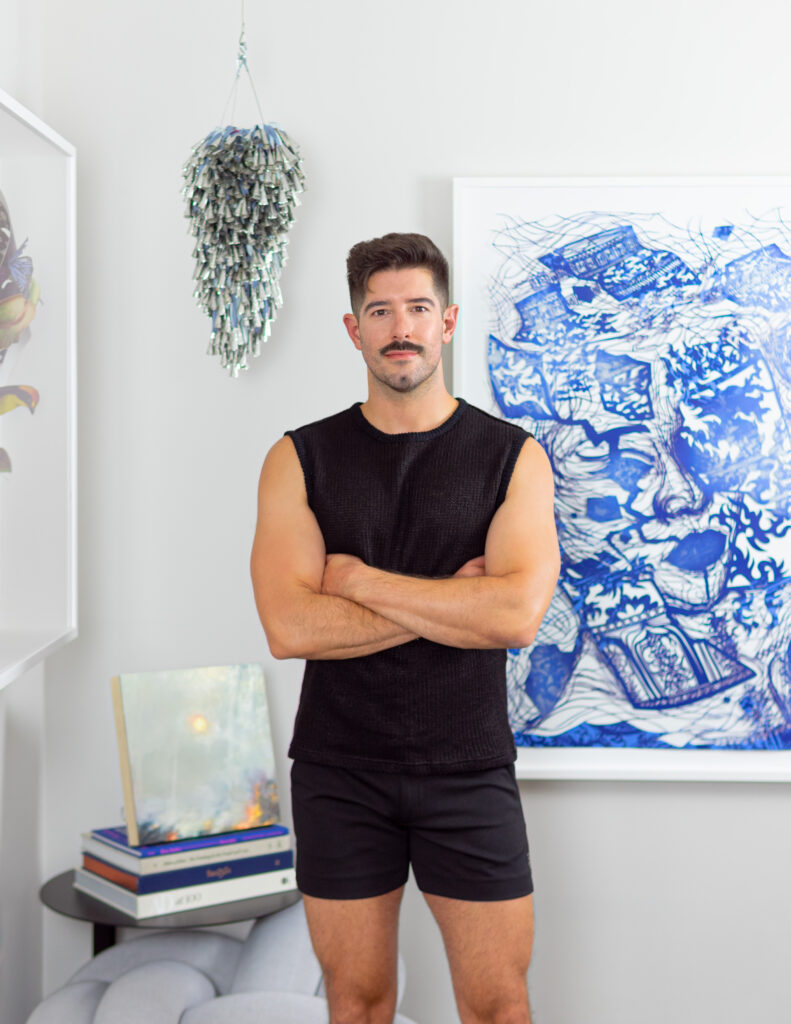
For Chicago-based collector Brandon John Harrington, the stage where his collection unfolds is never empty. Harrington’s home brims with theatrical works—Elsa Muñoz’s luminous washes of natural landscape, the sinewy wisps of Emily Weiner’s silhouettes, and the coils of dotted coloration which mark the practice of Brittney Leeanne Williams—that unfold like scenes from an ongoing play. By day, Harrington works at Google DeepMind, shaping the future of A.I.; by night, he serves as the board chair of Porchlight Music Theatre, where his lifelong devotion to performance (and its throughline in his life) deepens. This dual identity infuses his approach to collecting. For Harrington, the pursuit is less about possession than about building connections—between artist and collector, object and audience, history and the present. His recent rehang underscores this ethos: a home not as static gallery, but as a living set.
Where does the story of your personal collection begin?
My collection began with the official rite of passage for a millennial art collector: a late-night Instagram rabbit hole.
On a subsequent visit to New York, I went to Marinaro to see the one piece I had cold-emailed about and left with another entirely—an Anthony Iacono that the owner, Lauren Marinaro, pulled from the back room after a conversation was had in her office. That first acquisition taught me the most important lesson of collecting right out of the gate: The real magic isn’t always on the gallery walls—it’s in the conversation with the person who has the keys to the storage room.
Do you have any favorite pieces in your collection?
I love all my art equally—but there are three works that have served as guideposts, fundamentally shaping the collection and my journey with it.
The first is Miya Ando’s Radiant of the Eta Aquarids Meteor Shower April 17, 2020. That piece was a clarifying moment; it cemented my gravitation toward the ethereal and articulated an aesthetic that has become a tenet of my collection. My second would be Brittney Leeanne Williams’ Dream Interpretation 11, which was the first work to deliver a truly visceral, gut-level emotional blow upon viewing.
Finally, Elsa Muñoz’s La Luz Vuelve a Mi taught me the profound beauty of building a relationship directly with the artist. That experience shifted my understanding of collecting from the simple act of acquisition to the deeper joy of connection and stewardship.
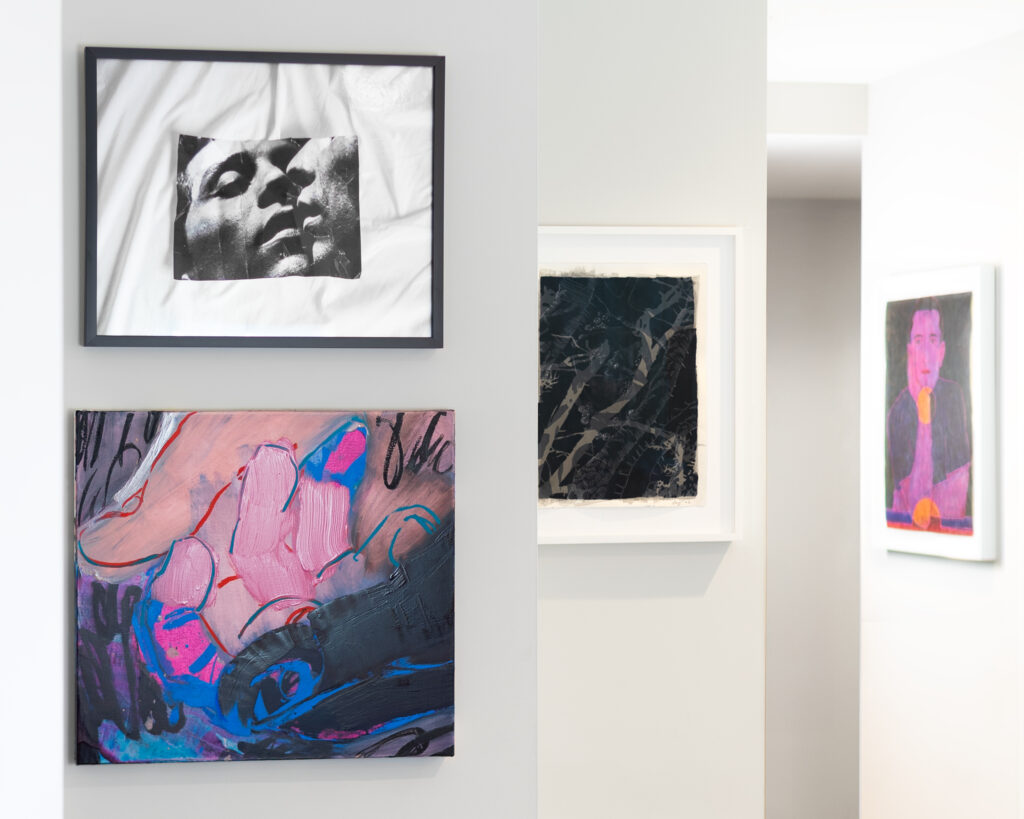
What do you plan to accomplish through the reinstallation of works in your home?
On a practical level, with a growing collection and pieces going out on loan, a rehang is a necessity. A reinstallation is like re-staging a play: When you place a painting next to a sculpture it’s never met, a new scene unfolds and the narrative between them is entirely new.
The goal is to spark these unexpected dialogues—juxtaposing emerging artists with established ones, or different mediums against each other—to keep the collection breathing. It’s a process of discovery that forces me to see works I’ve lived with for years in a new light, ensuring my home feels less like a museum and more like a living, evolving performance.
What was the most challenging piece in your personal collection to acquire?
Honestly, the biggest challenge for me is never about competition for a specific artist or work, but rather the interplay of patience and geography. As a collector based in Chicago, I always try to see a piece in person before acquiring it, which often means putting works on hold in other cities and waiting for my travel schedule to align.
I’ve learned to trust the timing of it all. I have a strong belief that the right pieces find you when they’re supposed to. Sometimes, a work you pass on will even circle back when it’s truly meant for your collection, as was the case with the initial work that brought me into the art world, which now hangs on my bathroom door: MEN by Nicholas Buffon.
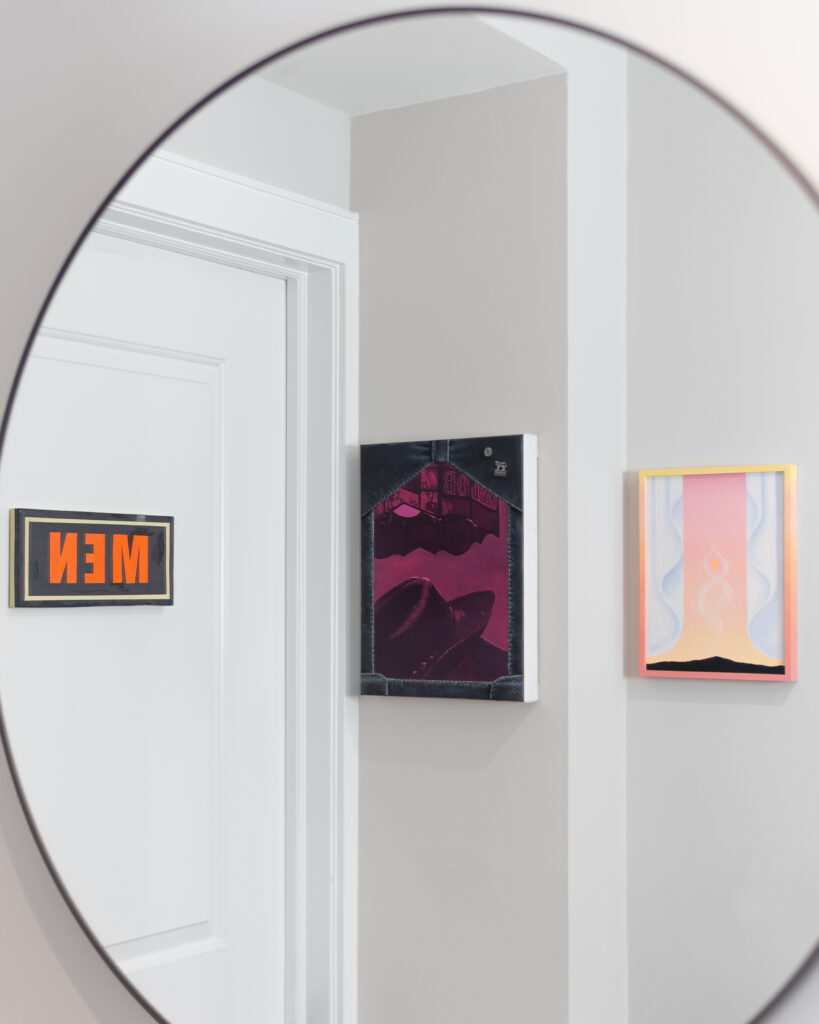
What was your biggest influence in fostering your passion for art?
My biggest influence wasn’t a painter, a person in my life or a movement, it was the theater. It is my first love and something I spend a lot of time thinking about as the board chair of a theater company in Chicago. For years, my artistic obsession was with the “stage picture”—that perfect, breathtaking moment in a performance where the lighting, the set, and the actors’s positions converge into a single, stunning composition which feels like a living painting.
Outside of the theater, I found myself chasing the ghost of that feeling. A truly great stage picture tells a whole story in a silent, visual beat, and it’s always fleeting. I realized that my desire to collect visual art came from a longing to capture that theatrical magic and live with it. When I look at art now, I’m often searching for that same quality. I’m drawn to works that have a strong compositional presence, a sense of distilled narrative, and an emotional charge, much like a scene frozen at its most potent moment. My passion for art is truly an extension of my passion for theater; it’s just a different way to appreciate a masterfully set scene.
What are the three must-see shows coming up on your radar?
I’m particularly looking forward to seeing Brittney Leeanne Williams’ solo presentation with Alexander Berggruen at The Armory Show this fall. Further out, I have my calendar marked for Antonius-Tín Bui’s show at Chicago’s own moniquemeloche in Winter 2026, and I won’t miss David Antonio Cruz’s exhibition at Wave Hill in New York in Spring 2026!
Which work in your home provokes the most conversation from visitors?
Without a doubt, it’s Mirror (David) by Gonzalo Reyes Rodriguez. It’s a photograph of a found image from the vintage queer magazine “David,” and it has this magnetic pull. It creates an immediate, intimate dialogue with a hidden history, especially for the queer men who visit my home.
But the conversations it sparks for me are even deeper, as the piece represents a whole ecosystem of support. It was in the inaugural show of the gallery David Peter Francis, and the founder, David Pagliarulo, has become a friend and art world confidant. As it’s also one of two works by Gonzalo in my collection, the piece is a constant reminder that the most rewarding part of collecting is the community you build along the way. Honestly, keep an eye on that gallery—the program and the artists have a lot of exciting things coming up in 2026.
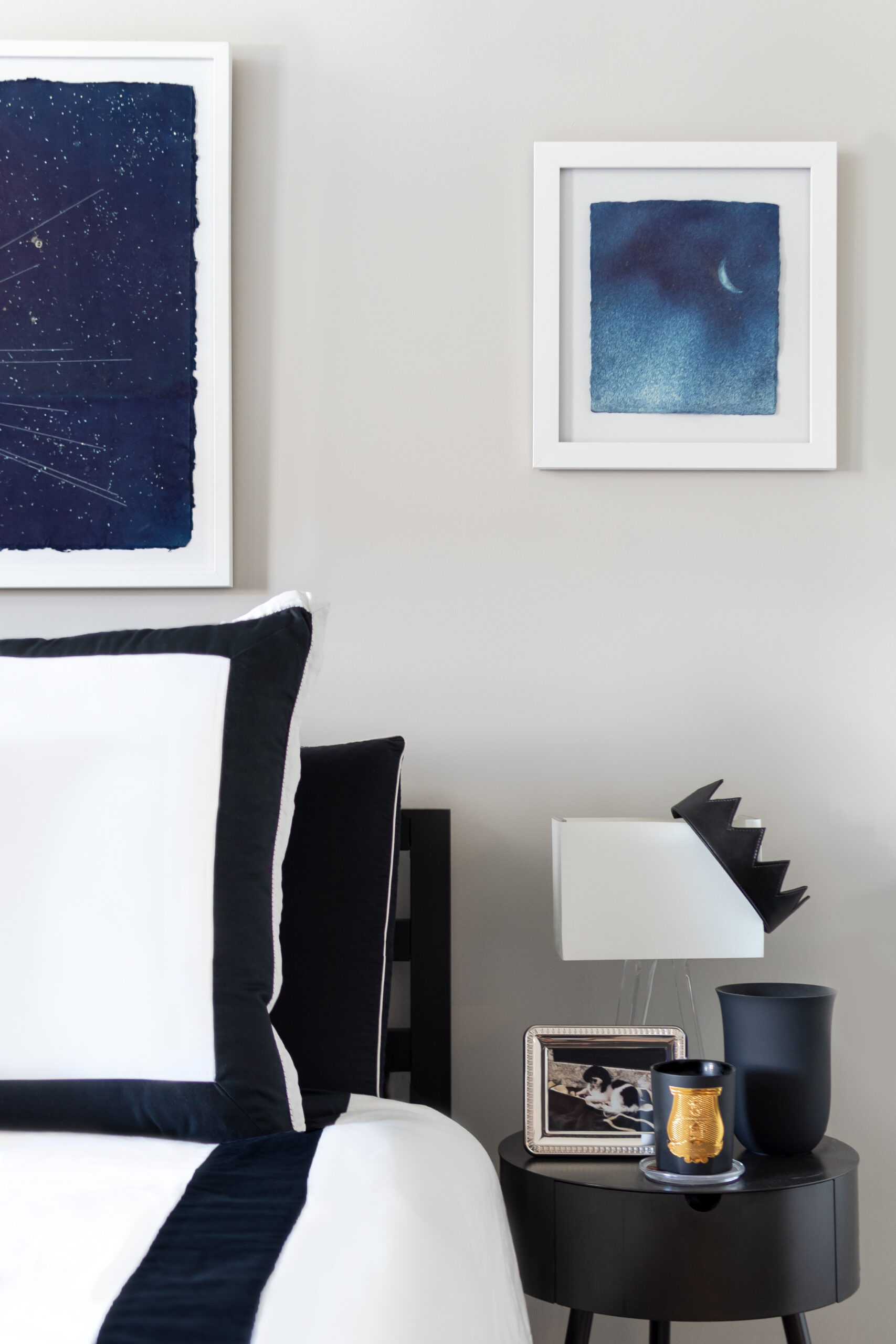
Every collector has made a rookie mistake or two. What was your most memorable?
My most memorable rookie mistake was learning the crucial detail of asking for “framed dimensions”—the hard way, of course. Early on, I acquired a piece I was thrilled about and had meticulously measured the perfect spot for it on my wall, completely overlooking the size of its rather generous frame. The feeling of bringing it home, only to realize it was hopelessly oversized for its intended destination, was a humbling and slightly comical rite of passage. It was a lesson I only needed to learn once. Now, a tape measure has a permanent home in my tote bag, and I religiously use blue painter’s tape to map out a work’s full footprint before it ever comes through the door.
Describe your art collection in three words.
Queer. Ethereal. Intentional.
What was the last piece of art that sent a visceral reaction through you?
Andrea Bowers’s You Gotta Give Them Hope, Quote from Harvey Milk, Castro Theater Marquee, from her recent show at Jessica Silverman. It absolutely stopped me in my tracks. As a queer man who grew up in the Bay Area, my own history is deeply tied to San Francisco. I became an adult there, I got sober there, and I spent countless nights at the Castro Theatre. To see that iconic marquee, charged with that specific quote from Harvey Milk, felt less like viewing an artwork and more like witnessing my own life reflected back at me in a single frame.
It was a powerful, full-circle moment. The piece perfectly embodies the kind of art I gravitate towards: work that isn’t always overtly queer on the surface, but which holds a profound, almost coded, significance for those of us who share that history. It’s a beacon and is joining my collection.
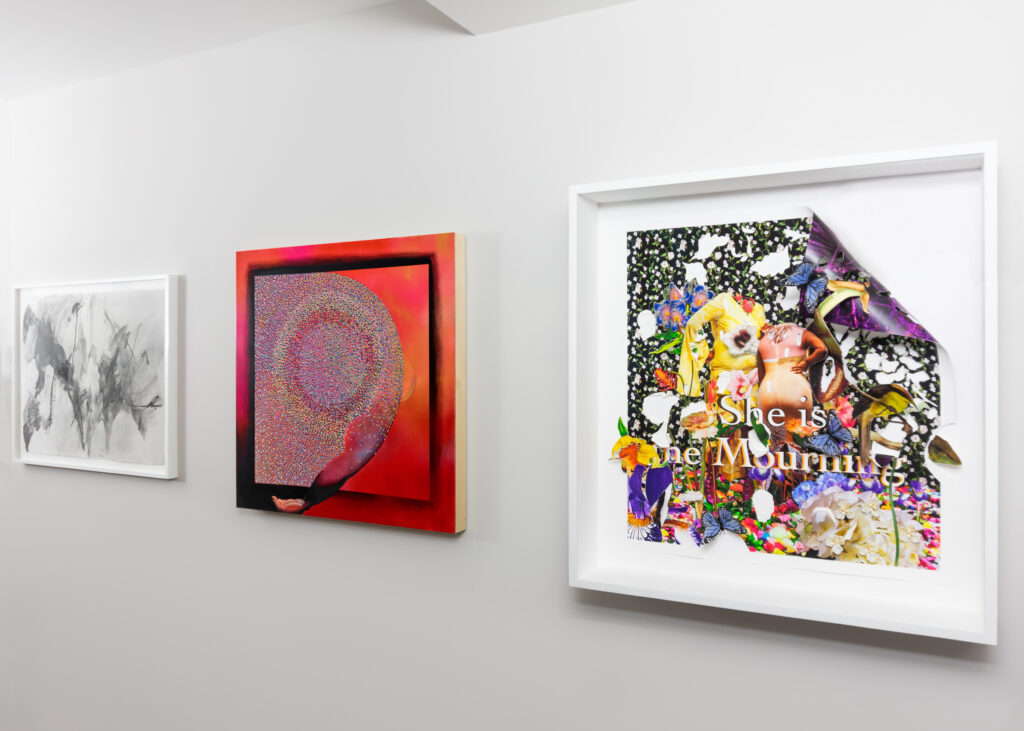
What book changed the way you think about art?
It’s a book about theater, but Peter Brook’s The Empty Space redefined my approach to visual art. His concept of ‘holy theatre’— a performance stripped of artifice to create a genuine, palpable connection—taught me to hunt for that same “liveness” in static objects.
I began looking past just technique or subject matter to find works that possess a powerful presence. Brook gave me a new vocabulary for the art I was searching for: objects that can command a room and create an intimate, undeniable encounter with the viewer.
Do you have an art-fair or museum-going uniform?
Absolutely. It’s less of a specific outfit and more of a permanent state of being, which I’m in as I answer this. My uniform is a simple black tee, black athletic shorts, and a comfortable pair of sneakers. The only piece on rotation is the tote bag, and my current go-to is one from Jessica Silverman Gallery in San Francisco, which ably handles whatever essentials—and tape measure—I am lugging around with me.










 in your life?
in your life?

